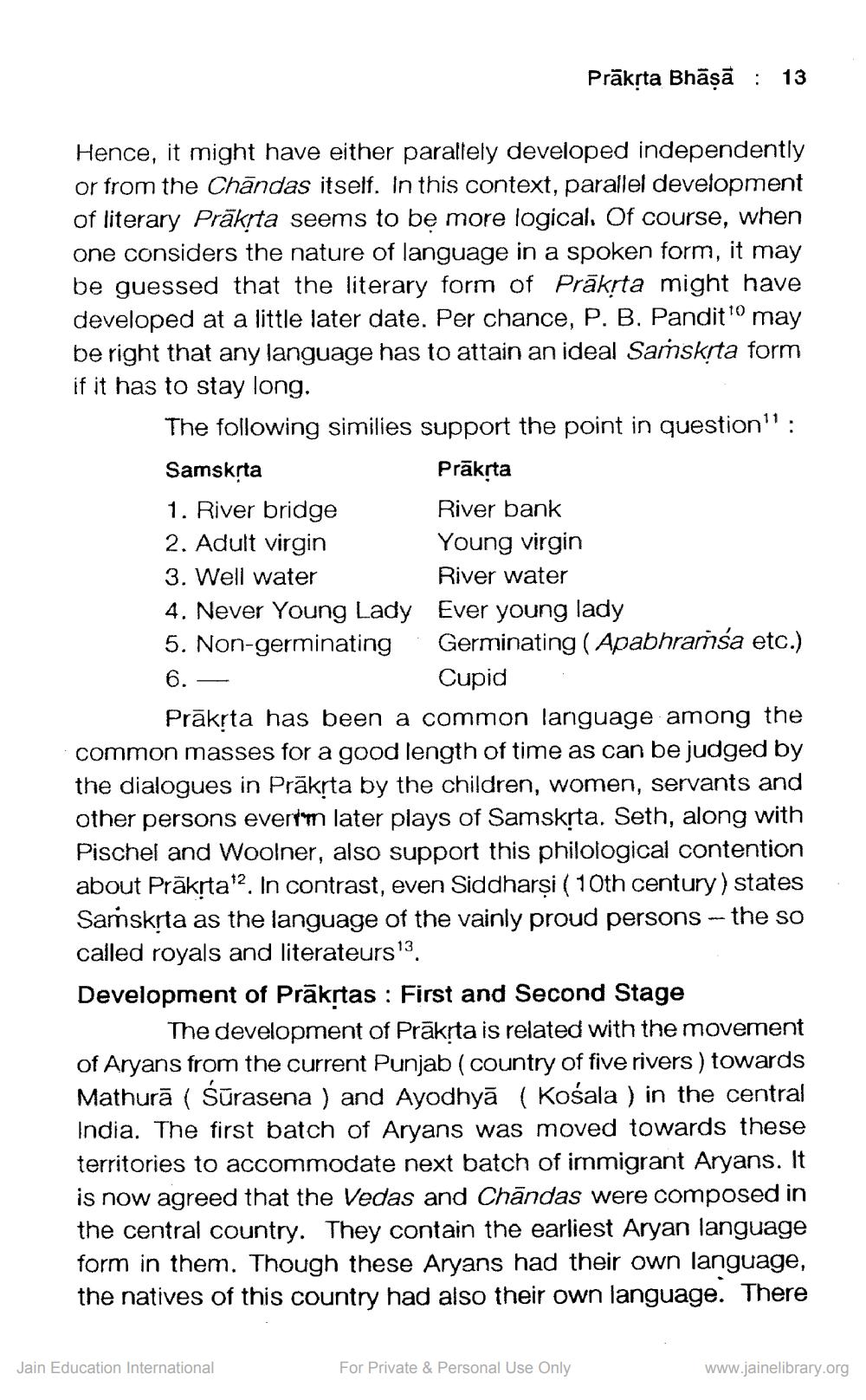________________
Prāksta Bhāṣā : 13
Hence, it might have either parallely developed independently or from the Chāndas itself. In this context, parallel development of literary Prākta seems to be more logical. Of course, when one considers the nature of language in a spoken form, it may be guessed that the literary form of Prākta might have developed at a little later date. Per chance, P. B. Pandit may be right that any language has to attain an ideal Saṁskrta form if it has to stay long.
The following similies support the point in question": Samskrta
Prākrta 1. River bridge River bank 2. Adult virgin
Young virgin 3. Well water
River water 4. Never Young Lady Ever young lady 5. Non-germinating Germinating (Apabhramsa etc.) 6. —
Cupid Prākrta has been a common language among the common masses for a good length of time as can be judged by the dialogues in Prākrta by the children, women, servants and other persons evertm later plays of Samskrta. Seth, along with Pischel and Woolner, also support this philological contention about Prākrta'?. In contrast, even Siddharşi ( 10th century) states Samskrta as the language of the vainly proud persons - the so called royals and literateurs 13. Development of Prākrtas : First and Second Stage
The development of Prākrta is related with the movement of Aryans from the current Punjab (country of five rivers ) towards Mathurā ( Śūrasena ) and Ayodhyā ( Kośala ) in the central India. The first batch of Aryans was moved towards these territories to accommodate next batch of immigrant Aryans. It is now agreed that the Vedas and Chāndas were composed in the central country. They contain the earliest Aryan language form in them. Though these Aryans had their own language, the natives of this country had also their own language. There
Jain Education International
For Private & Personal Use Only
www.jainelibrary.org




